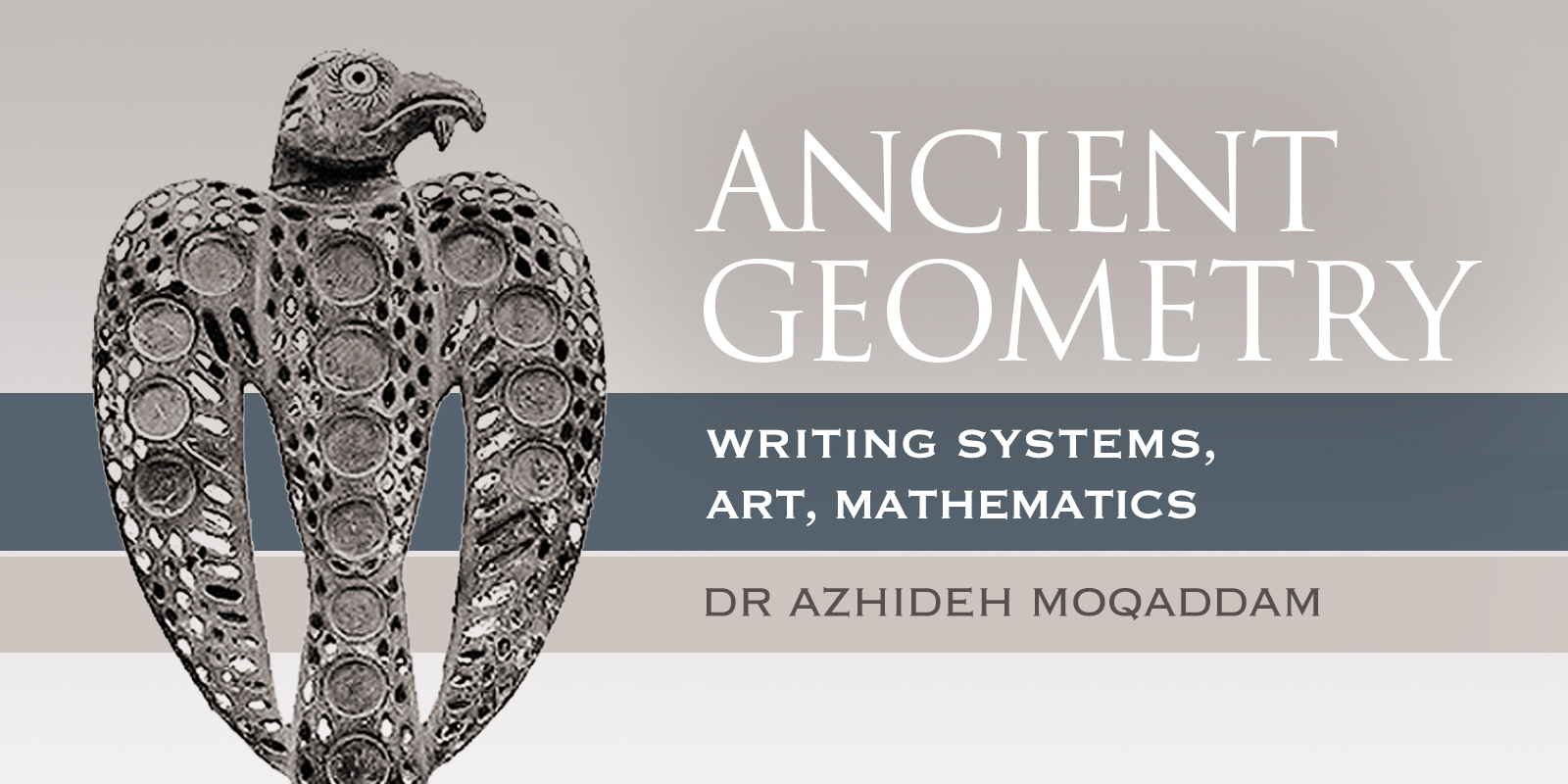


Should what we call Palaeolithic geometric patterns be actually classified as "geometrical categories", or are they merely linear re-creations of some phenomena and must be identified as geometrical when produced within a systematic framework? Geometry is not just a collection of shapes but an understanding of relations among shapes and related calculations as well. Did humankind discover the relations and became capable of changing shapes to each other? Nature was not able to give humankind such ability on itself. This ability was what created geometry. Clearly, geometry was not discovered somewhere on the earth but evolved in time, and its knowledge, like all other aspects of human culture, distributed from one society to another. How long did it take from the days when the so-called geometric patterns appeared up to the time when what is known as "Geometry" was born?
What happened during the period between the time of the most ancient geometric patterns of the Paleolithic era and the third millennium BCE, during which the geometric writing systems of the ancient Near/Middle East evolved? What is certain is that the highly developed architecture of the latter period in the ancient lands of the Near/Middle East and North Africa alone can be a sign of a high level of geometrical and mathematical knowledge, and such knowledge could not have emerged in a few centuries or millennia. This very aspect would imply that geometric knowledge and patterns had deep roots in time and in the daily lives of humans. An understanding of the procedures during which geometric patterns evolve, the mechanisms of their evolution and the position they occupied in humans’ minds may help decode their meanings in later periods.'

(left and right) Chlorite vase, Jiroft (Madjidzadeh, 2003, 67) (center) The exterior entrance of the Jiroft vase building (idem.)

Jiroft Board Games

(left) Board game from the Royal Cemetery of Ur (British Museum) (right) Board game and dies from Shahr-e Sukhteh (National Museum of Iran)

(left) Artificial eye ball from Shahr-e Sukhteh (right) Cyrus Cylinder
Geometric patterns constitute an important part of the most ancient writing systems of the Old World in the Sind valley, Iran and Mesopotamia. Some of the geometric shapes can be found in the Paleolithic petroglyphs of these countries as well as other parts of the world. Paleolithic cave paintings of Europe and geometric patterns occurring side by side pose serious questions as to identity of the latter. On the other hand, the appearance of a vast spectrum of geometric designs on the prehistoric potteries of the ancient Near/Middle East itself is witness to a long history of geometric knowledge in the human culture. Manifestations of this ancient knowledge can be traced back in different domains, but the most prominent may be the admirable architecture of the third millennium BCE, which apart from the relics embedded in ancient layers, is recorded in the overall designing of ritual objects as well as their decorations. Proto-Elamite and Linear Elamite are the two most ancient writing systems of Iran dating back to the late fourth and third millennium BCE. Despite the continuous efforts of specialists, the two scripts have resisted decipherment. The reasons for failures had been the identity of the language and the unknown structure of the scripts of which geometric patterns form the main part. In the absence of bi-lingual inscriptions, not likely to exist in earlier times, experts have to approach the problem through other ways. An understanding of the process of formation of signs may lead to the basic notions of a writing system and gradually may be the decoding of signs.
The archaeological excavations at the South Konar Sandal mounds of Jiroft in the Kerman province of Iran conducted during the years 2003 to 2007 unfolded remains of a highly flourished culture with an astonishingly sophisticated art. Most invaluable amongst the findings were a brick inscription and three clay tablets. Some very simple and not previously recorded signs along with others known in both Proto- and Linear Elamite sign collection, motivated the author to commence a study on the structure of these writing systems based on the process of sign formation. The author believes that in spite of the high number of signs in many ancient writing systems, no script could be invented without pre-plan or earlier stages of development. Dissection of the Linear Elamite signs and their comparison to the Proto-Elamite and Sumerian resulted in the reconstruction of what she calls "Master Grid": a diagram formed based on the two fundamental concepts of geometry, "line and dot" and the source for the invention of geometric signs. Such an apparently simple but actually very conceptual apparatus should have undergone a long period of mental and experimental refinement prior to this stage.
The author observes a close relation between the geometric writing systems and what is known as cuneiform script. Depicting the older pictographs in a new format, namely cone-like signs made by new writing instruments, caused them take distance from their pictorial origins. This new script could not have developed by accident and with no historical past. The process though, has not been properly studied. The roots of this new writing system may be searched in this very Grid too.
In addition to producing a collection of signs to record and communicate ideas, by a simple but at the same time highly generative structure, Master Grid bestowed on its inventors new capabilities never experienced before. Man’s dynamic mind took best advantage of what this instrument put at his disposal; in time, he refined and improved his achievements until evolved part of what we know as the cultural achievements of the third millennium BCE.
Knowledge, insight and art all sprouted out of this source and each based new germinations: Geometry created new patterns, defined their relations and sought to find new potentials inside them. Developed architecture offered prospects of stronger shelters and more harmonized buildings. Mathematics, dragging under measurements the difficult world around, designed also in repose, recreational devices causing, in their turn, the inventors to ponder further and deeper on specific subjects. Ancient melodies eventually poured out of memories into new instruments, and music, organized and more tangible, was replayed. Healing methods combined with new science and human pains were relieved not by hallucinatory mumblings but in the tool-making hands of mindful healers…
Studying geometric signs is an endeavour to open a way to the prehistoric mind.
- Assistant Professor of Ancient Iranian Culture and Languages, Faculty of Literature and Humanities, Tehran University, Iran)
- MA: Ancient Iranian Culture and Languages from Tehran University, Iran
- PhD: Ancient Iranian Culture and Languages from Tehran University, Iran (I also passed a short term "supervised reading and research course" for my PhD thesis at Harvard University)
- Interests: Paleoanthropology, Prehistoric Archaeology, History of Writing
- Currently teaching Ancient and Middle Iranian languages
→ Geometric Signs & Symbols in Rock Art
Why Should We Care about the Geometric Signs?
by Genevieve von Petzinger
→ Middle East Rock Art Archive
→ Middle East Rock Art Introduction
→ Camel Site in Saudi Arabia
→ Rock Art of Saudi Arabia
→ Saudi Arabia Rock Art Gallery
→ Rock Art of Iran
→ Negev Rock Art
→ Ancient Geometry: Writing Systems, Art, Mathematics
→ Rock Art of Hajar Mountains - United Arab Emirates
→ Bradshaw Foundation
→ Rock Art Network















